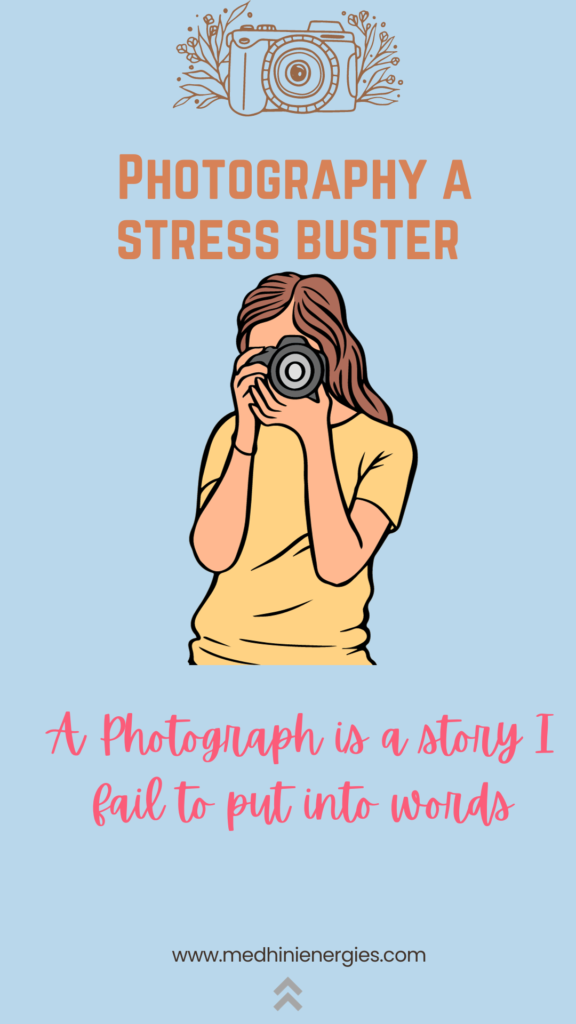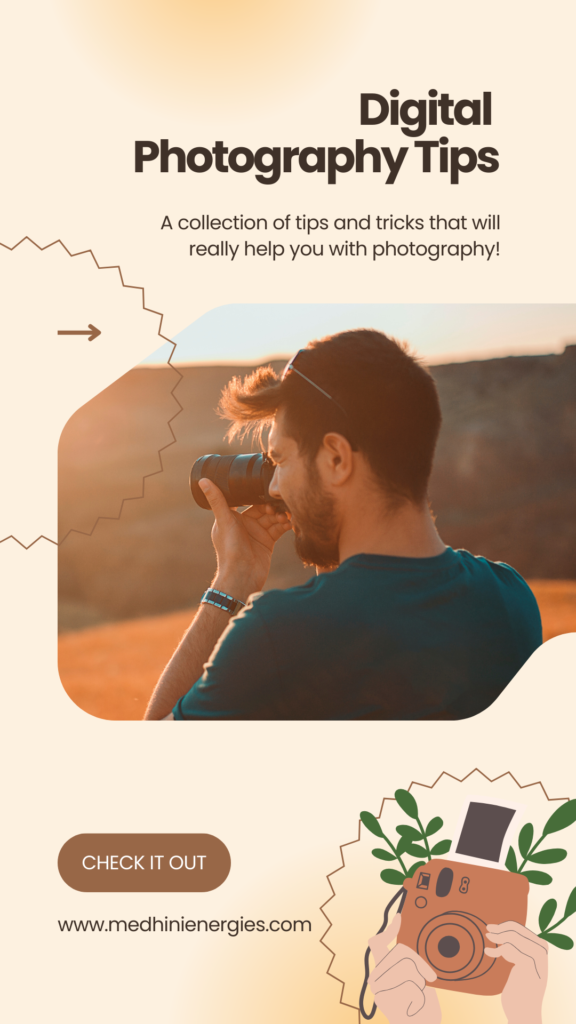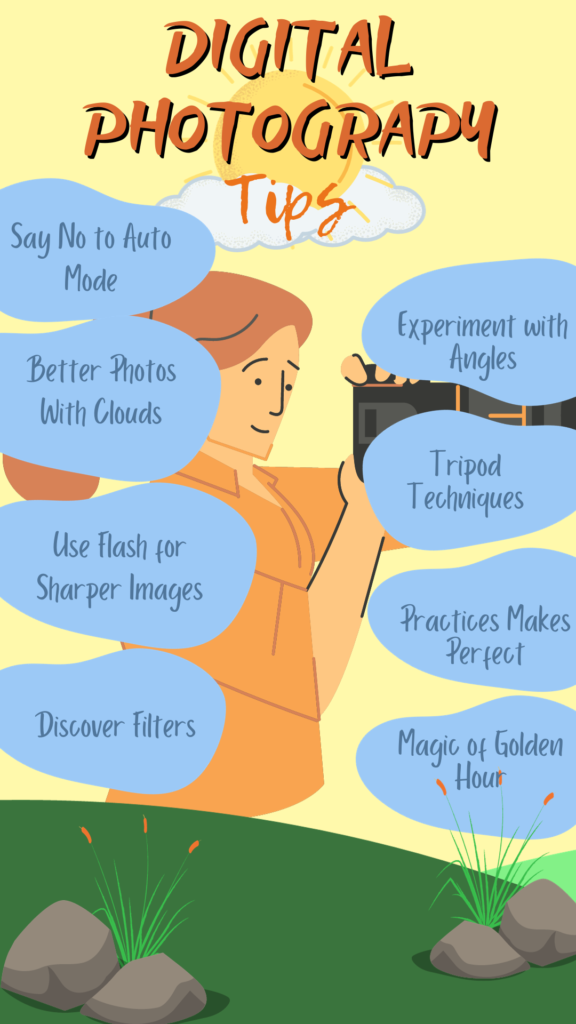Photographs serve as a walk down the memory lane, offering a nostalgic reminder of our past achievements and hardships. This is why it is essential to capture good pictures. We have compiled a list of nine of the most useful digital photography tips to help you navigate your journey.

You do not need to be an expert photographer or technologically superior to capture the best and most vivid images. You can simply follow these basic but creative digital photography tips, whether you are an amateur photographer or a seasoned one.
An Added advantage of photos is that they help to manage stress as well. Someone rightly said so about the Photography that “We take Photos as a return ticket to the moments otherwise gone”.
9 Digital Photography Tips
Say No to Auto Mode
We understand that the auto mode is a comfortable and convenient option that is especially enticing to beginners. While it is safe, there is no fun or creativity in simply clicking the shutter button while the auto mode decides everything else for you. To inject more excitement into your photography journey, consider exploring some digital photography tips to unlock your creative potential.
For example, ISO determines the ability to capture light. The higher the ISO, the brighter the image is. Thus, it is ideal for low-light environments or night photography. However, this can also make your photos look a bit grainy like tiny speckles.

Experiment With Angles
Most beginner photographers tend to capture every image at eye level. While this might lead to good pictures no doubt, it is not different or original because that is the way most of us see things in daily life. Here’s a neat digital photography tip: trying different angles like these can add a special touch and perspective to your photos.
There are countless angles you can experiment with. For example, did you know about the worm’s eye view? When you capture images from a very low level, it is called a worm’s eye view. Tall buildings, big trees, and skyscrapers look majestic if shot from this angle.
Bird’s eye view is the opposite of worm’s eye view. This angle requires clicking pictures from a very high angle. For example, a shot from the top of a hill or mountain or images from a drone camera. It’s fantastic for aerial shots.
Tripod Techniques
A tripod is always a smart investment. Some might think that it limits your movement but it opens up a whole new world of possibilities.
The first and most obvious advantage of using a tripod is the steadiness. Say goodbye to the camera shake and blurred images. Secondly, tripods are also an amazing device to experiment with if you want to try your hand at self-portraits.
Tripods will also allow you to focus on important things such as composition since it makes the image steady. Simply put, tripods have a bunch of benefits when used properly.
Practice Makes Perfect
This is an obvious but important digital photography tip. You need to shoot every day, regardless of whether you own a DSLR, SLR, any other camera, or simply your mobile phone. Do not hold yourself back if you do not have the best photography kit right now. Practicing shooting every day is essential to grow as a photographer.
Better Photos with Clouds
Clouds are like nature’s helpers for photographers! They can be super useful because they soften the harsh sunlight and make the light in your photos more even. This is really good, especially when you’re taking pictures of people.
Also, clouds can add a bit of character to a sky that might otherwise be boringly clear. So, when you’re taking photos, be patient and wait for the clouds to move into a position where they can make your pictures look even better!
The Magic of the Golden Hour
One of the most important digital photography tips is to take advantage of nature to capture your best shot. For example, the golden hour is a beautiful time when the sun casts a golden warm light which makes the surroundings very aesthetic. Grab your camera immediately.
Photographers working for National Geographic, cinematographers and so on take complete advantage of the golden hour to create some stunning shots.

Use Flash for Sharper Images
Have you ever taken a close-up picture of someone with a flash on? If so, you must have noticed that the captured image is really sharp and clear.
This happens because the flash provides a lot of light, letting you use a small camera setting called f-stop for more focus in your photo. Moreover, the flash is also very quick so it captures images quickly without giving the subject any opportunity to move. Thus, using a flash for close-up shots makes it very detailed, clear, and sharp.
Discover Filters
Many photographers these days like to use a tool called a graduated neutral density filter to capture scenes with both bright and dark elements. You can think of it as a camera accessory that acts like sunglasses but only on one side, smoothly transitioning from dark to clear.
This nifty filter is helpful because it blocks excessive light from certain areas, such as the sky, while ensuring that darker parts, like the ground, are well-captured. This way, the camera can handle the different light levels in a scene such as a landscape without losing any important details.
Raw or JPEG
Professional photographers mostly shoot raw because this is the best option if you wish to edit, manipulate, or retouch the images later. However, you should keep in mind that the size of raw files is usually larger so the processing time is longer.
On the other hand, JPEG files are immediately processed when you shoot so you can easily print or share them. Thus, if you do not have any plans of changing or editing the image, JPEG might be the suitable format.
Conclusion
In conclusion, to enhance your digital photography skills, embrace manual settings over auto mode for creative control. Do not shy away from experimenting with different angles, using tripods, and practicing daily to refine your craft. Leverage the magic of the golden hour, use flash for sharpness in close-ups, and discover the benefits of filters like graduated neutral density for balanced exposures.
As you embark on this photographic journey, remember that it’s not just about capturing images but about conveying emotions and stories through your lens. By integrating these digital photography tips, you’ll elevate your photography game, capturing moments with precision and creativity. Further you would like to go a level higher by taking some classes. a link for the same is given here.
FAQs
Can these digital photography tips be applied to any type of camera, including smartphones?
Yes, most of the tips are versatile and can be applied to any device regardless of whether you are using a DSLR camera, digital camera, phone, or something else.
What are some digital photography tips for beginners?
Some important digital photography tips for beginners are using manual mode, experimenting with angles, investing in a tripod, practicing every day, shooting during golden hour, using flash for sharper images, using filters, and knowing the right format for saving images.
Are tripods really important for digital photography?
Yes, tripods are a good investment. You can take self-portraits, take shots without the fear of shaky or blurry images, and experiment with different techniques.
Are filters like graduated neutral density filters only for professional photographers, or can beginners benefit from using them too?
Filters can be beneficial for photographers at all skill levels. While professionals often use them for specific scenes, beginners can experiment with filters to enhance their images and understand their impact on different lighting conditions.
Should I shoot in RAW format or JPEG?
The choice between RAW and JPEG depends on your intentions. If you plan to edit extensively, shoot in RAW for maximum flexibility. However, if you want ready-to-share or print images without much post-processing hassle, JPEG is the way to go.